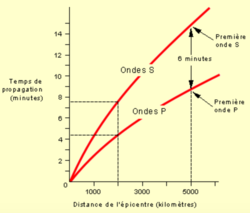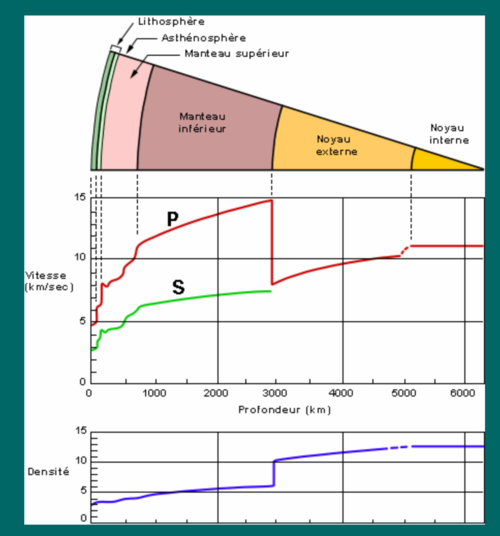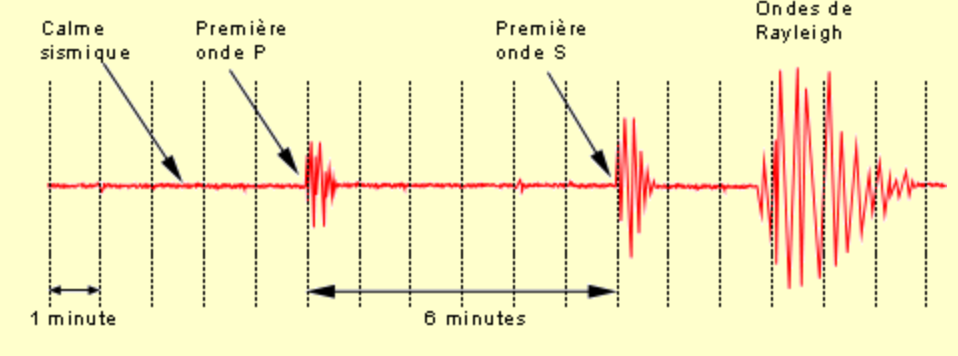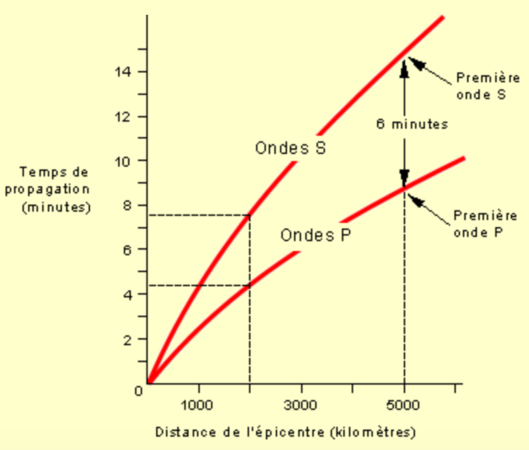Variational methods: Sound waves in solid and fluid materials
Elasticity in solids
Under the action of external forces a solid body moves. But it can also be deformed, i.e. it can change volume and shape. The first succesful attempt to describe this phenomenon is provided by the theory of elasticity. The theory is based on the assumptions that (1) the solid body can modeled as a continuum medium and (2) the energetic cost of the deformation is kept at the lowest order in perturbation. The fundamental equations of elasticity have been established by Cauchy and Poisson in the twenties of the 19th century, well before the discovery of the atomic structure of matter. An important experimental observation is that a sudden deformation induces small oscillations propagating in the material. Here we derive their equations of motion which describe how the sound propagate in solids.
The strain tensor
We consider a perfectly isotropic continuum medium and assume that at time  a body is at rest and no external forces are applied. Each point of the body can be identified with its postion in the space:
a body is at rest and no external forces are applied. Each point of the body can be identified with its postion in the space:

Then a sudden deformation is applied and the point located in  moves to a new location
moves to a new location  at time
at time  . The displacement,
. The displacement,  , differs from point to point of the body and is then a function of the original position
, differs from point to point of the body and is then a function of the original position  . The displacement vectorial field
. The displacement vectorial field

encodes then all informations about the deformation of the body. However large displacements does not always correspond to large deformation as the body can move rigidly without deformation. To quantify how much a body is deformed we consider two points at an infinitesimal distance  .
.
- Assuming small deformations, show that the distance
 after the deformation can be written as:
after the deformation can be written as:

The tensor  is called strain tensor, is symmetric and defined as
is called strain tensor, is symmetric and defined as

- Consider now a volume element
 and show that at the first order in perturbation one has
and show that at the first order in perturbation one has

This means that the trace of the strain tensor identifies with the relative change in volume  of the body. In general all deformation can be represented as the sum of a uniform compression (change in volume without change of shape) and a shear (change of shape without change of volume):
of the body. In general all deformation can be represented as the sum of a uniform compression (change in volume without change of shape) and a shear (change of shape without change of volume):

The first term is a shear as its trace is zero. The second term is a compression.
Energy considerations
The total energy of the body is given by the sum of the elastic and kinetic energy (the gravity is neglected). A body at rest, in abscence of external force and at thermal equilibrium does not display any deformation, this means that when the strain tensor is zero for all points, the potential energy displays a minimum. As a consequence for small deformations the first terms of the expansion of the potential energy must be quadratic in the strain tensor (elastic approximation).
The more general quadratic form can be written as  , where the tensor
, where the tensor  contains all the elastic moduli. For an isotropic material the energy cost should be frame independent and we can write a simpler quadratic form that we will discuss in class:
contains all the elastic moduli. For an isotropic material the energy cost should be frame independent and we can write a simpler quadratic form that we will discuss in class:
![{\displaystyle E_{\text{el}}=\int d{\vec {r}}\left[{\frac {K}{2}}\sum _{i}\epsilon _{ii}^{2}+\mu \sum _{ik}\left(\epsilon _{ik}-{\frac {1}{3}}\delta _{ik}{\text{Tr}}(\epsilon )\right)^{2}\right]}](https://wikimedia.org/api/rest_v1/media/math/render/svg/859c4586807fd9d94a8968cbf6fa9fd192790ebe)
The first term accounts for the cost of the change in volume, the second for the change of shape. The positive constants  are respectively the bulk and the shear modulus and have dimensions of a pressure. These two constants are material dependent and fully describe its elastic properties.
are respectively the bulk and the shear modulus and have dimensions of a pressure. These two constants are material dependent and fully describe its elastic properties.
The kinetic energy can then be written as

where  the mass density and we used the fact that the mass contained in an infinitesimal volume around the point located in
the mass density and we used the fact that the mass contained in an infinitesimal volume around the point located in  is
is  .
.
The action for a simplified model
We have now all ingredients to write the equation of motion of the displacement fields  . To simplify the calculation we first discuss the case where displacements are function only of the
. To simplify the calculation we first discuss the case where displacements are function only of the  coordinate:
coordinate:

this means that two point with the same  will have exactly the same displacement.
will have exactly the same displacement.
- Replace
 by
by  and write the elastic energy in term of
and write the elastic energy in term of 
The action associated to this energy is

where  is the Lagrangian denisty
is the Lagrangian denisty
- Write explicitly
 .
.
- Using the variational methods write the 3 equations of motion for
 .
.
- Show that u_x(\vec r, t)Compute the longitudinal mode velocity and the transverse mode velocity.
Seismic waves recorded by a seismograph after an earthquake. Longitudinal waves are the quickest and for this reason called primary (P-waves), then arrive the transverse waves, for this reason called secondary (S-waves). Finally it's the turn of Rayleigh waves which are also solution of the D'Alembert equation but propagate only on the Earth surface. They are slower and less damped then bulk waves.
The time delay between the P and S waves grows with seismograph-epincenter distance. The measure of three independent seismographs allows thus to identify the location of the epicenter.
Elasticity in fluids
Consider a uniform ideal gas of equilibrium mass density  and equilibrium pressure
and equilibrium pressure  . Let us investigate the longitudinal oscillations of such a gas. Of course, these oscillations are usually referred to as sound waves.
. Let us investigate the longitudinal oscillations of such a gas. Of course, these oscillations are usually referred to as sound waves.

Elastic waves recorder by a seismograph after an earthquake. The longitudinal waves are the quickest and for this reason called primary (P-waves), the transverse are then called secondary (S-waves). Finally the Railegh waves, they are also solution of the D'Alembert equation but the propagate only on the surface. They are slower, but less damped then bulk waves.

The time delay between the two grows with the distance between the seismograph and the epincenter (linearly for an isotropic uniform material, in a tabulated way for our Planet). The measure of three independent seismographs allows then to identify the location of the epicenter.
Kinetic Energy
In a first time we can start from the discrete description of a system of N atoms at positions  .
.
- Write the kinetic energy,
 , for this system as a function of mass of the atom
, for this system as a function of mass of the atom  .
.
- Consider the limit of small oscillations. Take the continuum limit:
 and show that the kinetic energy writes
and show that the kinetic energy writes

Potential Energy
In order to write the full Lagrangian we need to find the potential energy associated to the oscillations. During the oscillations the mass density can have small fluctuations

The scalar field  represents the relative fluctuation of the density.
represents the relative fluctuation of the density.
As a consequence of these fluctuations, the volume which contains a given mass  expands from the initial value
expands from the initial value  to a new value
to a new value  . The pressure inside the domain also fluctuates
. The pressure inside the domain also fluctuates  . The variation of potential energy is given by the work associated to the volume expansion:
. The variation of potential energy is given by the work associated to the volume expansion:

where  is the density of potential energy.
is the density of potential energy.
Generally speaking, a sound wave in an ideal gas oscillates sufficiently rapidly that heat is unable to flow fast enough to smooth out any temperature perturbations generated by the wave. Under these circumstances, the gas obeys the adiabatic gas law,
 constant
constant
where  the ratio of specific heats (i.e., the ratio of the gas's specific heat at constant pressure to its specific heat at constant volume). This ratio is approximately
the ratio of specific heats (i.e., the ratio of the gas's specific heat at constant pressure to its specific heat at constant volume). This ratio is approximately  for ordinary air.
for ordinary air.
- Show that the total potential energy,
 writes
writes

- Using the continuity equation of the gas,
 , show that
, show that  and write the potential energy as a function of
and write the potential energy as a function of 
Lagrangian description
- Show that the Lagrangian density writes

- Show that the associated equation of motion

- Using the continuity relation
 show that the latter equation corresponds to the D'Alembert Equation for the scalar field
show that the latter equation corresponds to the D'Alembert Equation for the scalar field 
This scalar field behaves exaclty like an elastic scalar field.
- Determine the sound velocity.

Men landed on the Moon 50 years ago, but today a Journey to the Center of the Earth remains science fiction. Many scientific operation funded drilling holes through the ocean floor, but they all failed to reach the first discontinuity:
the external mantel. However elastic wave can travel their journey probes the internal structure of our Planet. For example we know that there is a fluid external core because secondary waves cannot go deeper than 3000 Km.




















![{\displaystyle E_{\text{el}}=\int d{\vec {r}}\left[{\frac {K}{2}}\sum _{i}\epsilon _{ii}^{2}+\mu \sum _{ik}\left(\epsilon _{ik}-{\frac {1}{3}}\delta _{ik}{\text{Tr}}(\epsilon )\right)^{2}\right]}](https://wikimedia.org/api/rest_v1/media/math/render/svg/859c4586807fd9d94a8968cbf6fa9fd192790ebe)










































